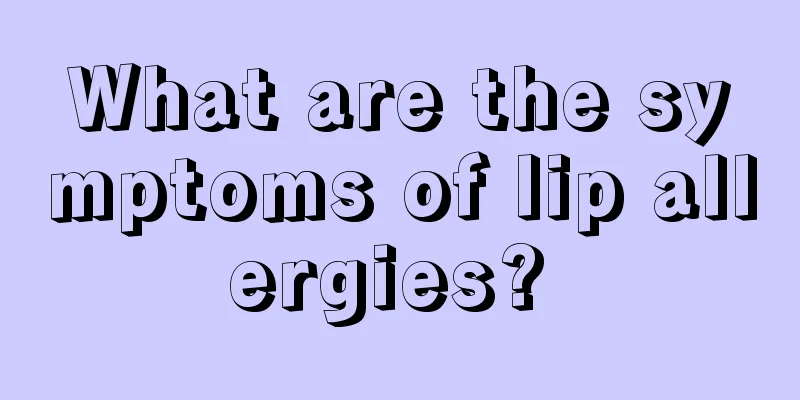How to treat diffuse sclerosing thyroid cancer? What are the characteristics of diffuse sclerosing thyroid cancer?

|
Diffuse thyroid disease is a disease of the thyroid gland. Common types of diffuse thyroid disease in clinic are nodular goiter (hereinafter referred to as nodular goiter), thyroid cancer (hereinafter referred to as thyroid cancer), Hashimoto's thyroiditis (hereinafter referred to as Hashimoto's disease), Graves' disease, etc. Since the treatment plans for each disease are different, it is necessary to make a qualitative diagnosis of such diseases before treatment. So, how to treat diffuse sclerosing thyroid cancer? The morphological characteristics of diffuse sclerosing thyroid cancer are: 1. The tumor diffusely involves one or both thyroid glands; 2. Numerous irregular and short micropapillaries are formed, located in the small slits of lymphatic vessels, and there may also be solid cell nests; 3. A large number of squamous metaplastic foci; 4. A large amount of sand body calcification; 5. Obvious lymphocyte infiltration; 6. Obvious fibrosis. DSV is most likely to be misdiagnosed as a benign diffuse thyroid disease, such as lymphocytic thyroiditis or subacute granulomatous thyroiditis. How to treat diffuse sclerosing thyroid cancer Papillary thyroid carcinoma: Classical papillary thyroid carcinoma often presents nodular changes, often accompanied by sand-like calcification, and has a clear boundary with the normal thyroid gland, while DSV erodes the entire thyroid lobe, with almost no remaining normal thyroid tissue structure. Subacute thyroiditis: Subacute thyroiditis is a diffuse lesion in the thyroid gland. The lesion area is uneven, flake-like, or cloud-like with extremely low echoes. It can involve one lobe, but usually bilaterally, and is very easy to confuse. However, there is no sand-like calcification in the lesion area of subacute thyroiditis. Hashimoto's thyroiditis: Hashimoto's thyroiditis is a bilateral, symmetrical, diffuse change of the thyroid gland. The bilateral thyroid glands are diffuse and uneven, the parenchyma is rough and has low echogenicity, but is not accompanied by psammoma bodies. It may be accompanied by hyperthyroidism in the acute phase. The blood flow signal in the thyroid gland is extremely rich, while the DSV blood flow signal is sparse. Nodular goiter: DSV is the least likely to be confused with nodular goiter, but those with cysts as the main manifestation are easily mistaken for benign, because cystic changes in thyroid cancer are rare, and cystic changes in DSV are rare. The distinguishing points are microcalcifications in the thyroid parenchyma and metastatic lymph nodes in the neck. Once DSV becomes cystic, it indicates a long course of disease and a high degree of malignancy, and almost all of them have metastasis to the cervical lymph nodes. Cervical lymph nodes: Thyroid inflammation is often accompanied by hyperplastic changes in the central zone (zone VI). The lymph nodes are hypoechoic, located around the thyroid gland and trachea, about 5-7 mm, with parenchymal thickening and blood flow signal level 1. DSV lymph node metastasis is relatively standard, and there may be metastasis in zones VI, III, IV and the contralateral side. The metastatic lymph nodes range from 5 mm to 30 mm, are isoechoic, sand-like calcification and cystic changes, and the blood flow signal is rich at about level 2. Papillary thyroid carcinoma (PTC) is the most common thyroid malignancy and can be divided into multiple subtypes, of which diffuse sclerosing variant papillary carcinoma of thyroid (DSVPC) is one of them. This subtype mostly occurs in young people around 20 years old (5-35 years old), accounting for about 5% of PTC. |
<<: Is thyroid follicular tumor benign or malignant? How to treat thyroid follicular tumor
Recommend
How to properly match diet in late stage of intestinal cancer
Patients with advanced intestinal cancer must pay...
How to get rid of red cheeks
Red face is a skin problem caused by excessive re...
The benefits of radiotherapy after colorectal cancer surgery
Postoperative radiotherapy for patients with colo...
What are the dangers of taking antibiotics for a long time
Long-term use of antibiotics is very harmful to p...
Does a hamartoma on the kidney require surgery?
Renal hamartoma is a urological disease. This dis...
How should prostate tumors be treated?
If prostate tumors can be detected early and trea...
Can adults drink breast milk?
Breast milk is the only food that a newborn baby ...
What are the dangers of lingual duct cyst
Cysts can develop in any part of the body, and th...
Can long-term consumption of pickled food lead to stomach cancer?
Experts say that the cause of gastric cancer is m...
What causes axillary lymph node pain?
If you feel pain in your axillary lymph nodes, yo...
What are the symptoms of recurrence after ovarian cancer surgery
The ovaries of women play a very important role. ...
The most advanced female sterilization method
Sterilization is a better method of contraception...
Which foods can prevent prostate cancer? What are the ways to prevent prostate cancer?
Nowadays, many people suffer from prostate cancer...
Early life expectancy of prostate cancer
Prostate cancer has a higher chance of being cure...
Acne on forehead due to hot weather
When the weather is hot, people's bodies are ...









